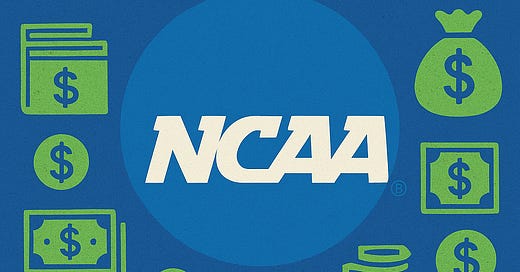Speed Read (Get the headlines here, and read on below)
The so-called House settlement is changing the financial calculus for some university athletic departments, and many are thinking about abandoning their Division I status for Division II or III
In part because of less NIL money, some student athletes in smaller programs may be larger targets for criminals, as we’ve seen in accusations in the Southland Conference.
It seems this will be more a trickle, than a mad dash for the exits. As schools try to sort out what to do they should, with the help of the NCAA, take steps to prevent student athletes exposure to unnecessary risks because of their financial decisions.
Keep reading below for the full story.
The House Settlement, an agreement being entered into by the NCAA because of a class-action lawsuit related to Name, Image, and Likeness use, will likely be approved by a judge this spring. There have obviously been lots of changes to the college sports landscape in the last few years, but this agreement will codify some big transformations — including schools paying athletes directly. One of the outcomes of the House settlement will be that some of the financial changes will lead schools to consider reclassifying out of being a Division I athletics department and looking at Division II or Division III.
For the most part press reports about this have been more theoretical, but St. Francis University became the first school to publicly announce their intention to reclassify. Matt Brown at Extra Points had a really informative deep dive recently exploring why they made the choice and outlining the pros and cons that other schools are debating. It is safe to say that St. Francis won’t be the only school making this change and some schools looking at Division II may be significantly larger in terms of enrollment or athletics budget. There are many reasons schools are eyeing this change, but I won’t go into those here— go read Matt’s piece as he explains it really well.
What I want to explore are the challenges that athletes, schools, conferences and the NCAA will face from a gambling and sports integrity standpoint as they make these decisions. A great place to start is with an ESPN report from earlier this month. As March Madness was in full swing, ESPN reported that a crime ring was “traveling around the nation, inviting athletes to parties where there was gambling.” The alleged criminals’ strategy was to put the student athletes into debt from gambling losses and then leverage their compromised position down the road.
This story came from the Southland Conference, an athletic conference with schools from Texas and Louisiana who participate in Division I sports. These schools are not what you would consider the blue bloods of college sports royalty, but a member school played in this year’s NCAA basketball tournament and all schools in the conference field teams in at least six sports. The schools’ athletics budget ranged from about $8 million to just under $25 million according to U.S. Department of Education data. I offer this to give you an idea of where these schools fit. For a bit of comparison, the University of Florida athletics budget request for the 2024-2025 school year was about $180 million.
Now what does all of this have to do with security, you might ask? As schools like St. Francis move to smaller, less resourced conferences, and the schools themselves have less pressure to increase their athletic budgets, their athletes will not be at any lesser risk. Data from Signify and the NCAA shows that bettors who lose their wagers target student athletes on social media. To their credit the NCAA ran an ad campaign during every NCAA tournament game this March discouraging the practice, but the fact remains that student athletes are accessible and vulnerable to these threats.
The NCAA also has a role to play here. They should support Division II and III conferences along with the reclassifying schools with resources to protect the students. It is safe to assume that as some universities make the move there will be fewer games that feature them in betting markets. But you can imagine that for things like playoffs or championships games featuring those schools might appear in sportsbooks’ offerings. Further, as players are less likely to garner significant NIL deals, they may become more attractive targets to criminals like the ones mentioned above in the Southland Conference story. The NCAA needs to support those schools in building tools into the foundation of their athletics departments as they plan transitions and figure out how to manage the changes. As the NCAA figures out this new landscape it needs to embrace the role of information repository to help share best practices.
As colleges and universities contemplate the pros and cons and whether to move from Division I to Division II or III they should not care just about their finances or their mission to educate students, but they should take the opportunity to build and provide tools that protect their student athletes and fans. Now that the NCAA is taking steps to more outwardly embrace gambling, it should publicly commit a portion of that money to protect its student athletes and fans. A dedication of funds to integrity and security would stake its claim as innovators in this space and show the young men and women who drive their product what the true meaning of leadership is.
If you are looking for help understanding emerging threats related to gambling or other industries, how the government (especially Congress) works, writing content, or more I have a consultancy and I’d love to help you. I support clients in a variety of sectors and look forward to working with you. Please reach out to discuss how I can help at WeinStrategyLab@pm.me.



